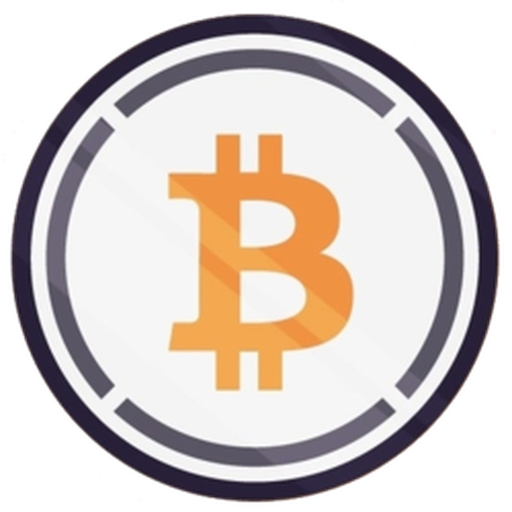Solana vs Wrapped Bitcoin – Price, Market Cap & Performance Compared
Which coin performs better – Solana or Wrapped Bitcoin?
We compare the current price (211.95 $ vs 113 478 $), market cap (115 139 188 576 vs 14 410 544 342) and all-time high (293.31 vs 123 882).
Find out which one stands out right now!
Solana is currently trading at 211.95 $, while Wrapped Bitcoin stands at 113 478 $. These cryptocurrencies differ not only in price but also in market presence.
The market cap of Solana is around 115 139 188 576, and Wrapped Bitcoin has about 14 410 544 342. Their respective all-time highs are 293.31 for Solana and 123 882 for Wrapped Bitcoin.
Daily trading volume and the 24h price change (-1.06296 % vs 1.58359 %) also offer key insights.
Compare all metrics now and see which coin fits your investment strategy best!
Solana
Solana is an advanced blockchain platform that has quickly gained traction due to its high-speed and low-cost transactions. Its architecture is designed to handle thousands of transactions per second, which positions it as a strong competitor in the decentralized finance space. As developers continue to build on its network, Solana is poised to support a diverse range of applications, making it a significant player in the cryptocurrency ecosystem.
more informationWrapped Bitcoin
Wrapped Bitcoin is an ERC-20 token that represents Bitcoin on the Ethereum blockchain, allowing Bitcoin holders to participate in decentralized finance (DeFi) activities. By wrapping Bitcoin, users can leverage the security and widespread acceptance of Bitcoin while accessing Ethereum's diverse range of decentralized applications and smart contracts. This tokenized version of Bitcoin facilitates seamless interaction between the two major blockchain ecosystems, enhancing liquidity and interoperability.
more information

|

|
|
|
|
General Information |
|
|---|---|
|
Title
Solana
|
Title
Wrapped Bitcoin
|
|
Symbol
sol
|
Symbol
wbtc
|
|
Whitepaper
-
|
Whitepaper
|
|
Website
|
Website
|
|
Community
-
|
Community
-
|
|
Last Updated
2025-09-24 23:29
|
Last Updated
2025-09-24 23:29
|
Price Data |
|
|---|---|
|
Current Price $
211.95 $
|
Current Price $
113 478 $
|
|
High 24h
216.29 $
|
High 24h
114 113 $
|
|
Low 24h
206.33 $
|
Low 24h
111 384 $
|
|
Price Change 24h
-2.27718 $
|
Price Change 24h
1 769.01 $
|
|
Price Change % 24h
-1.06296 %
|
Price Change % 24h
1.58359 %
|
Market Data |
|
|---|---|
|
Market Cap
115 139 188 576
|
Market Cap
14 410 544 342
|
|
Total Volume
8 426 373 441
|
Total Volume
300 863 783
|
|
Market Cap Change 24h
-1 726 644 361
|
Market Cap Change 24h
193 114 003
|
|
Market Cap Change % 24h
-1.47746 %
|
Market Cap Change % 24h
1.35829 %
|
|
Return on Investment (ROI)
-
|
Return on Investment (ROI)
-
|
Supply and Availability |
|
|---|---|
|
Circulating Supply
543 390 185
|
Circulating Supply
127 038
|
|
Total Supply
610 459 596
|
Total Supply
127 038
|
|
Max Supply
-
|
Max Supply
127 038
|
Historical Data |
|
|---|---|
|
All Time High (ATH)
293.31
|
All Time High (ATH)
123 882
|
|
ATH Change %
-27.78745 %
|
ATH Change %
-8.33483 %
|
|
ATH Date
2025-01-19 11:15
|
ATH Date
2025-08-14 00:40
|
|
All Time Low (ATL)
0.50080
|
All Time Low (ATL)
3 139.17
|
|
ATL Change %
42 194 %
|
ATL Change %
3 517.39336 %
|
|
ATL Date
2020-05-11 19:35
|
ATL Date
2019-04-02 00:00
|
Solana
The Rise of Solana: A Deep Dive into the Blockchain Superstar
Solana (SOL) has emerged as one of the most prominent blockchain platforms in recent years, showcasing impressive growth and technological advancements. Known for its high-speed transactions and low fees, Solana has become a favorite among developers and investors alike. This article aims to explore the unique features of Solana, its historical performance, as well as its future prospects.
Key Features Setting Solana Apart
Solana's key selling point is its ability to process transactions at lightning speed compared to other blockchains. It utilizes a unique consensus mechanism known as Proof of History (PoH), which enables the network to handle thousands of transactions per second (TPS), a feat unmatched by many other blockchains. This innovation allows for scalability without compromising on speed or cost, making Solana an attractive option for decentralized applications (DApps) and decentralized finance (DeFi) projects. Additionally, the low fee structure further enhances its appeal in the crypto space.
Advantages of Solana
One of the main advantages of Solana is its scalability. As the demand for blockchain technology grows, the need for scalable solutions becomes more critical. Solana's architecture allows for rapid scaling, positioning it as a robust platform for future expansion. Furthermore, Solana boasts an active developer community that continuously contributes to its ecosystem, resulting in a diverse range of applications and services being built on the network. The high throughput and low transaction costs make it an ideal environment for developers, encouraging innovation across various sectors.
Challenges and Criticisms
No technology comes without its set of challenges, and Solana is no exception. One of the criticism often aimed at Solana is its level of decentralization. Critics argue that the network's reliance on a limited set of validators potentially undermines its decentralized ethos. Additionally, like other emerging technologies, Solana faced network outages in the past, raising concerns about its reliability and stability during high-stress periods of network activity.
A Look Back: Solana's Historical Performance
Solana's journey began in 2020 when it was introduced to the crypto world. Its price hit an all-time low (ATL) of $0.500801 in May 2020. The blockchain quickly garnered attention, and by November 2021, it reached an all-time high (ATH) of $259.96. Solana's price movements during these years reflect the broader market sentiment and growing interest in scalable blockchain solutions. Despite experiencing significant market volatility, including a notable price correction from its ATH, Solana has maintained a strong market presence.
Future Prospects of Solana
As we look to the future, Solana's prospects seem promising. Its growing ecosystem, coupled with continuous technological improvements, positions it well to capture a significant share of the blockchain market. The platform's focus on scalability and efficiency will likely drive more developers and projects to choose Solana as their preferred blockchain network. Furthermore, ongoing partnerships and integrations suggest a positive trajectory for Solana, allowing it to compete with other major blockchains in the years to come.
In conclusion, Solana represents a significant development in the crypto landscape, distinguished by its speed, scalability, and low-cost transactions. While the network faces inherent challenges that accompany any young and rapidly growing technology, the potential for innovation and adoption remains substantial. As Solana continues to evolve, it will undoubtedly be a crypto story worth following closely.
Wrapped Bitcoin
Understanding Wrapped Bitcoin (WBTC): A closer look
Wrapped Bitcoin (WBTC) is a groundbreaking innovation in the world of cryptocurrency that has bridged the gap between Bitcoin and the Ethereum blockchain. As its name suggests, Wrapped Bitcoin is a token representing Bitcoin on the Ethereum network. This tokenized version of Bitcoin allows users to integrate Bitcoin liquidity into Ethereum's decentralized finance (DeFi) ecosystem.
The Mechanics Behind WBTC
Wrapped Bitcoin operates on a simple principle: for every WBTC minted, an equivalent amount of Bitcoin is held in reserve. This 1:1 backing ensures that WBTC maintains parity with the price of Bitcoin. The process involves a custodian holding physical Bitcoin while a smart contract handles the issuance and redeeming of WBTC. This structure allows users to enjoy the unique attributes of Ethereum, such as smart contract compatibility, while utilizing Bitcoin's renowned store of value.
Advantages of Wrapped Bitcoin
One of the primary benefits of WBTC is its ability to bring Bitcoin's liquidity to Ethereum's robust DeFi ecosystem. This enables Bitcoin holders to participate in activities like yield farming, lending, and decentralized exchanges, which were previously inaccessible without selling their Bitcoin. Additionally, transactions involving WBTC are executed on the Ethereum blockchain, which can offer faster transaction times and lower fees compared to Bitcoin's network.
Drawbacks to Consider
Despite its advantages, WBTC is not without its drawbacks. The primary concern lies in the centralized nature of the custody system. Unlike Bitcoin, which is decentralized, WBTC relies on a set of custodians and merchants for its issuance. This introduces counterparty risk, where users must trust these entities to securely hold the Bitcoin reserves. Additionally, since WBTC exists on Ethereum, it is also subject to the network's scalability issues and potential vulnerabilities.
Historical Performance and Market Adoption
Since its introduction in 2019, Wrapped Bitcoin has seen significant growth. The token hit its all-time low of $3139.17 shortly after launch but quickly gained traction, riding the coattails of Bitcoin’s own market rallies. WBTC reached an all-time high of $73,505 in March 2024, reflecting Bitcoin's bullish trends and the growing adoption within the DeFi space.
Throughout its journey, WBTC has consistently mirrored Bitcoin’s price movements, minus slight deviations due to liquidity and market nuances. Currently, WBTC is trading at $67,066, demonstrating its resilience as a trusted Bitcoin substitute within the Ethereum ecosystem.
Future Prospects for Wrapped Bitcoin
Looking ahead, the future of Wrapped Bitcoin appears promising, especially as the DeFi market continues to mature and evolve. The increasing interoperability between blockchains is likely to enhance WBTC's usability even further. Moreover, as more individuals and institutions recognize the potential of tokenized assets, WBTC may see widespread adoption as a preferred tool for leveraging Bitcoin into Ethereum-based financial services.
However, potential investors and users should keep an eye on developments in decentralized custody and cross-chain solutions, as these technological advancements could redefine the landscape for wrapped tokens, decreasing centralization risks and increasing user confidence.
Conclusion
In summary, Wrapped Bitcoin serves as a pivotal bridge between Bitcoin's vast liquidity and Ethereum's innovative financial applications. While it has drawbacks, mainly due to its centralized aspects, the benefits it offers are compelling for those looking to diversify their crypto endeavors. As technological advancements continue to unfold, Wrapped Bitcoin is poised to remain a significant player in the intersection of blockchain ecosystems.

